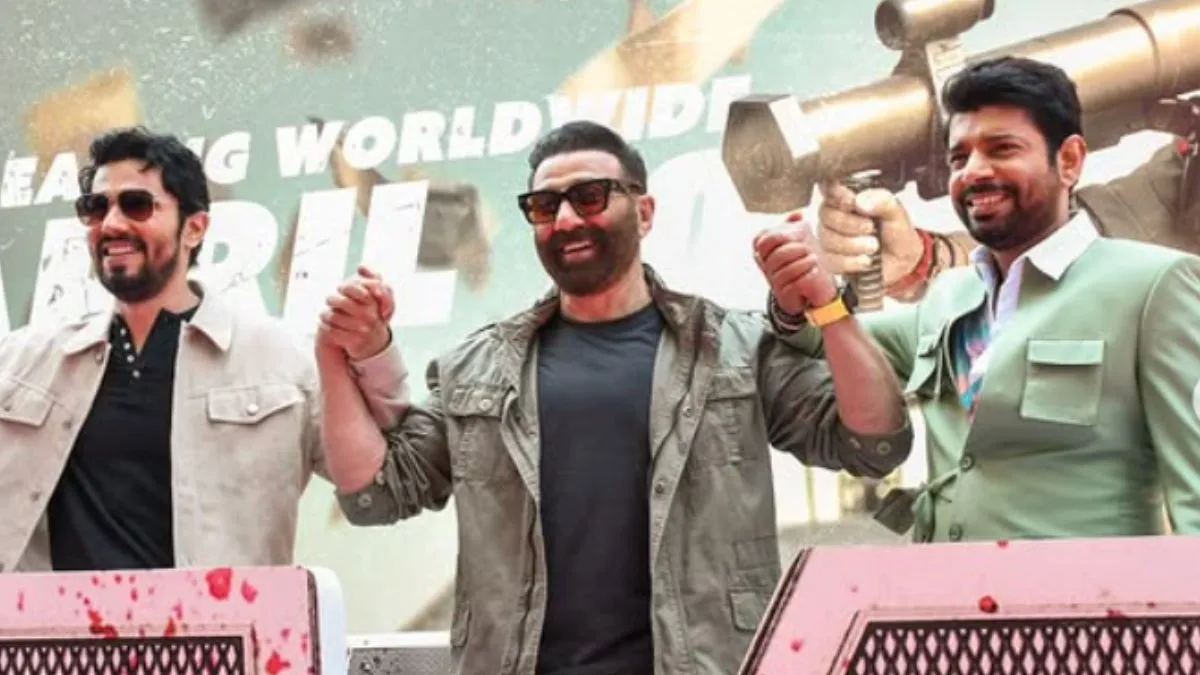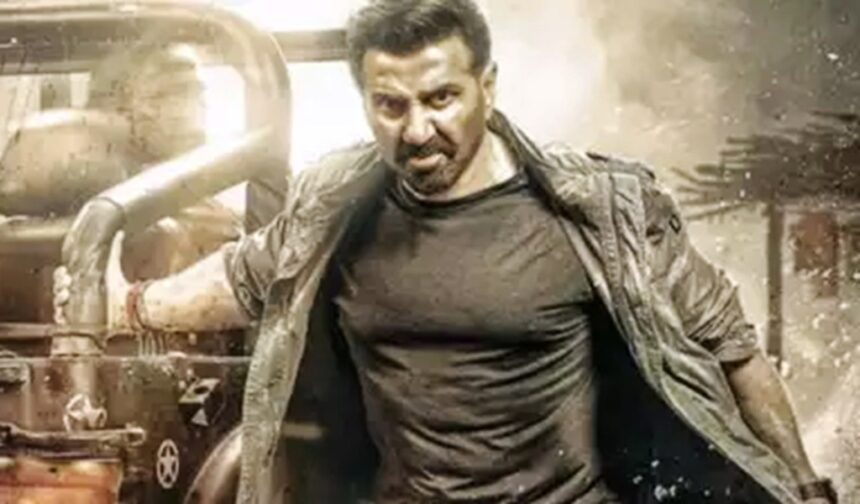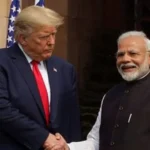Sunny Deol’s “Jaat” storms into theatres, aiming to revive the pulse of mass action dramas on the big screen. Directed by Gopichand Malineni, making his Bollywood debut, the film brings together a stellar cast including Randeep Hooda, Regina Cassandra, and Vineet Kumar Singh.
Positioned as a high-energy, emotion-driven spectacle, “Jaat” has been marketed as Deol’s grand re-entry into the pan-India action arena.
Fans have been eager to see what the collaboration between North and South cinematic styles would bring, and the early buzz promises action-packed sequences, gripping dialogue, and a nostalgic nod to Deol’s iconic persona. While reviews are decidedly mixed, audiences looking for an explosive theatre experience may find exactly what they’re after.

Jaat Movie Review Sunny Deol
The film Jaat combines high-impact action with a narrative driven by morality and social justice. Directed by Gopichand Malineni in his Hindi-directorial debut, the movie centres on two polar-opposite forces—Brigadier Balbeer Pratap Singh (Sunny Deol) and the malevolent Ranatunga (Randeep Hooda). Set against the escalating turmoil of a terrorized village, Jaat uses its story to weave themes of justice, revenge, and the fight for a better tomorrow.
Plot Overview
At its core, Jaat follows the heroic journey of Brigadier Balbeer Pratap Singh, a righteous and larger-than-life army officer, who arrives in a coastal village plagued by chaos and violence. The village’s residents live under the oppressive rule of Ranatunga, a feared former militant with roots in organized crime. Played with precision by Randeep Hooda, Ranatunga embodies tyranny, commanding an empire through fear and brutality, assisted by his equally ruthless brother Somulu (Vineet Kumar Singh).
Balbeer’s arrival is no accident––he witnesses the atrocities firsthand, which propel him into action. From daring fistfights to gripping standoffs, Jaat builds its tension around the escalating conflict between these two titans. Balbeer rallies the oppressed villagers, showcasing strength, strategy, and an unshakable moral compass. What ensues is a quintessential clash of ideals: the unyielding crusader of good versus the manipulative ruler of chaos.
The action unfolds in explosive scenes set across vivid, dusty rural landscapes. From narrow streets to expansive battle zones, the setting plays an integral role in emphasizing the stakes of this battle––the freedom and dignity of the village’s people. With every punch, helmet slap, and thunderous roar of dialogue, Sunny Deol cements himself as the symbolic defender against oppression.
Themes of Justice and Retribution
Jaat may deliver plenty of raw, adrenaline-pumping sequences, but its beating heart lies in its central themes. At the forefront is the fight against corruption and systemic decay. Balbeer Pratap Singh embodies the ideal of an incorruptible saviour, someone whose very existence challenges an unjust system. Through his unwavering sense of duty, the film explores how individuals can inspire collective resistance against oppression.
Sunny Deol’s larger-than-life screen persona elevates these themes into emotionally charged storytelling. His character doesn’t just defeat enemies; he dismantles the very structures of crime and fear that have held back the community. This echoes themes from some of Deol’s earlier classics—ordinary men rising to extraordinary challenges to restore order.
Randeep Hooda’s portrayal of Ranatunga offers an equally compelling contrast. His character isn’t just power-hungry; he symbolizes the insidious nature of unchecked greed and tyranny. The emotional undertones of vengeance and retribution are clear, making this battle personal on both sides. Hooda’s methodical, calculated villainy adds depth to the ongoing fight, leaving audiences pondering the roots of evil within societal power structures.
The movie also subtly touches on themes of community resilience and empowerment. Balbeer’s fight isn’t just his own—it becomes a shared mission. The villagers, while initially gripped by fear, are inspired to come together and reclaim their dignity. This well-worn theme of strength in unity is given a fresh twist through the cultural infusion of both North and South Indian storytelling styles featured in Jaat.
In every punch-packed scene, dialogue-heavy confrontation, and heartfelt exchange between characters, Jaat manages to elevate action cinema with a message. It’s not just about who wins the fight; it’s about what that victory means to the people fighting to have their voices heard.

Performances and Character Analysis
The success of Jaat largely hinges on the powerhouse performances delivered by its lead actors. Sunny Deol and Randeep Hooda each bring their unique strengths to the movie, crafting a gripping dynamic of hero versus villain. Through nuanced acting and commanding screen presence, these stars elevate the film beyond its conventional story.
Sunny Deol’s Star Power
Jaat showcasing his action prowess, Sunny Deol reminds audiences why he remains one of Bollywood’s most beloved action heroes. At 66, Deol’s portrayal of Brigadier Balbeer Pratap Singh balances his signature larger-than-life persona with emotional vulnerability. Known for his thunderous dialogue delivery and intense physicality, he brings an old-school charm that still hits hard in every scene.
Whether he’s smashing through walls or delivering a heartfelt monologue on justice, Deol has tapped into the nostalgia that makes his fan base so loyal. His ability to embody the “righteous underdog turned invincible force” is unmatched, and Jaat serves as a return to form for the action icon. Moments where he rallies the villagers are reminiscent of his iconic scenes from Gadar, adding layers of emotional depth amid the chaotic action. Deol’s screen presence ensures that even the film’s exaggerated moments remain entertaining. If anything, his powerful performance hides some of the story’s weaknesses, holding the audience’s attention throughout.
Randeep Hooda as Ranatunga
On the other side of this high-octane showdown stands Randeep Hooda’s villainous Ranatunga, a character steeped in menace and calculation. Hooda has a knack for portraying antagonists with eerie believability, and Ranatunga is no exception. As a former militant establishing a reign of terror in the village, Hooda strikes a perfect balance between flamboyance and restraint.
His performance captures a darkness that feels uncomfortably real, particularly in scenes where he manipulates the villagers with fear. Hooda doesn’t play Ranatunga as a simple caricature of evil—his quiet, brooding demeanour hints at the traumatic past that shaped his actions. This layered approach gives depth to a role that could have easily been one-note.
The chemistry between Deol and Hooda is infectious, reviving the energy of classic hero-vs-villain confrontations. Whether they’re exchanging fiery dialogues or clashing in brutal action sequences, their polar opposites amplify the stakes. Hooda’s portrayal ensures the audience feels equally frustrated and captivated by Ranatunga’s villainy. It’s a performance that lingers, cementing his status as one of Bollywood’s most dependable actors when it comes to gritty roles.
In Jaat, the performances of these two stalwarts turn a familiar narrative into a compelling journey, making it a must-watch for fans of character-driven action dramas.

Technical and Cinematic Aspects
The technical foundation of Jaat plays a vital role in bringing its story and action sequences to life. From the director’s unique vision to the carefully calibrated background score, these artistic elements shape the viewing experience in profound ways.
Direction by Gopichand Malineni
Making his Bollywood debut with Jaat, Gopichand Malineni draws from his extensive career in South Indian cinema to create a fusion of storytelling styles. Known for his ability to handle larger-than-life narratives in Telugu cinema, Malineni brings a high-energy, almost theatrical flair to his directorial approach in this film. His knack for grandiose action and emotionally charged drama is apparent, particularly in larger set-piece moments where chaos on-screen feels choreographed to perfection.
However, Malineni’s style doesn’t entirely gel with Bollywood sensibilities in some areas. Critics and audiences have pointed out that the pacing occasionally falters, especially in expository portions that could have been tighter.
Still, his distinct South Indian style—marked by exaggerated action and emotional peaks—injects visual dynamism into an otherwise conventional revenge story. It’s clear that his transition into Hindi-language cinema aims to retain the sensibilities that worked for his regional hits, offering a vibrant yet polarizing cinematic experience in Jaat.
Cinematography and Editing
Rishi Punjabi’s work behind the camera stands out as one of Jaat‘s most defining strengths. Known for his aesthetic versatility, Punjabi captures both action-packed moments and emotional revelations with equal flair.
The film’s gritty rural landscapes are given a polished edge, while dynamic camera angles during combat scenes make the action feel up-close and impactful. The warm, earthy tones reflect the oppressive backdrop of the narrative, while slow-motion shots amplify the drama during climactic sequences.
At the editing desk, Navin Nooli ensures the film remains visually slick. His work excels during high-stakes action sequences, creating seamless transitions that maintain the audience’s adrenaline. However, there’s room for improvement in managing the film’s overall rhythm.
Some scenes in the first act feel overly drawn out, taking the narrative longer than necessary to gain momentum. Despite these hiccups, Nooli’s ability to present tight, visually engaging sequences ensures that Jaat doesn’t lose steam during its crucial moments.
Background Score and Sound Design
Thaman S’s pulsating background score is a double-edged sword in Jaat. On one hand, his music elevates the dramatic weight of essential moments, injecting excitement and emotional urgency through bold, rhythmic compositions. The action sequences, in particular, are bolstered by a thundering score that perfectly matches the tone and energy of the on-screen chaos.
However, audience feedback has noted that the score occasionally veers into excessive territory. There are moments where the loud, overwhelming music overshadows dialogue or diminishes the subtlety needed in emotional scenes. This imbalance in sound design may feel jarring to some, detracting from what are otherwise well-composed tracks. Still, Thaman S’s contribution undeniably adds a sense of grandeur to the film, keeping viewers on edge during key moments.
By blending visual splendour with auditory impact, Jaat manages to captivate through its technical merits, even if some elements falter in delivery. As a whole, the technical team behind the movie successfully brings Gopichand Malineni’s wild, action-centric vision to the screen, creating moments that demand attention even when the storytelling takes predictable turns.

Strengths and Weaknesses
Every movie has its highs and lows, and “Jaat” is no exception. While it shines in certain areas, there are clear aspects where it falters, leaving the audience longing for more balance. Here’s a closer look:
Engaging First Half vs. Flawed Second Half
The audience’s reception of Jaat is largely divided between its two halves. The first half is widely praised for being gripping and packed with adrenaline. It kicks off with a bang, featuring tense standoffs, well-choreographed action scenes, and tightly-paced storytelling, keeping viewers on the edge of their seats. Sunny Deol’s introduction as Brigadier Balbeer Pratap Singh showcases the kind of larger-than-life heroics fans love. The initial non-linear screenplay, full of mystery and intensity, hooks the audience, setting expectations high.
However, the second half struggles to maintain the momentum. As the narrative progresses, the pace slows down. The confrontations between Balbeer and Ranatunga, while explosive at first, begin to feel repetitive. Emotional arcs that are introduced aren’t fully developed—some characters fade into the background, and certain subplots feel rushed or neglected. Critics have pointed out that this imbalance makes the film’s latter portion underwhelming, preventing it from fully capitalizing on its promising beginning.
One of the most glaring issues is the lack of nuance in its storytelling as it draws toward its climax. Where the first half feels unpredictable and thrilling, the latter half becomes a bit too formulaic. By resorting to clichés and predictable resolutions, Jaat misses an opportunity to elevate itself beyond a typical mass entertainer.
Social Messaging and Real-life References
Jaat attempts to weave social themes into its high-octane storytelling, and while the intention is commendable, the execution is uneven. The film integrates ideas of justice, community resilience, and systemic corruption, aiming to resonate with real-world challenges. At times, it even gestures towards gender equality and empowerment, particularly through Saiyami Kher’s role as a committed police officer. Yet, these important narratives are sidelined, taking a backseat to the action-heavy plot.
The movie also draws subtle inspiration from real-life socio-political issues, including regional oppression and the struggle of the common people. Sunny Deol’s character as a justice-driven army officer channels a broader message about morality and courage in the face of adversity. However, these themes, while present, feel somewhat overshadowed by the film’s need to focus on loud theatrics and larger-than-life action.
One interesting nod to cultural significance is the inclusion of elements from the Ramayana. A scene featuring a Jai Shri Ram anthem underscores the idea of good triumphing over evil, aligning the protagonist’s fight with mythological undertones. This connection gives the film a layer of cultural relatability, but the lack of depth in exploring this inspiration leaves it feeling superficial.
Overall, “Jaat” succeeds in grabbing attention with its ambitious themes, but it stumbles when it comes to exploring them deeply or weaving them seamlessly into the action. The real-life references and social messages feel more like symbolic gestures rather than meaningful conversations, which keeps the film rooted in entertainment without delving into thought-provoking territory.
Conclusion
“Jaat” stands as an ambitious yet polarizing addition to Sunny Deol’s storied filmography. Balancing nostalgia with larger-than-life theatrics, it delivers exactly what fans of mass action dramas expect—intense fight sequences, fiery dialogues, and a hero embodying justice. While its storyline leans into familiar tropes, the high-energy execution and memorable performances keep the audience engaged.
For those who thrive on cinematic adrenaline and big-screen spectacles, Jaat is a satisfying ride. It’s a film that knows its audience and delivers unapologetically, making it a solid choice for those seeking unapologetic entertainment.

Geoff Thomas is an award winning journalist known for his sharp insights and no-nonsense reporting style. Over the years he has worked for Reuters and the Canadian Press covering everything from political scandals to human interest stories. He brings a clear and direct approach to his work.














